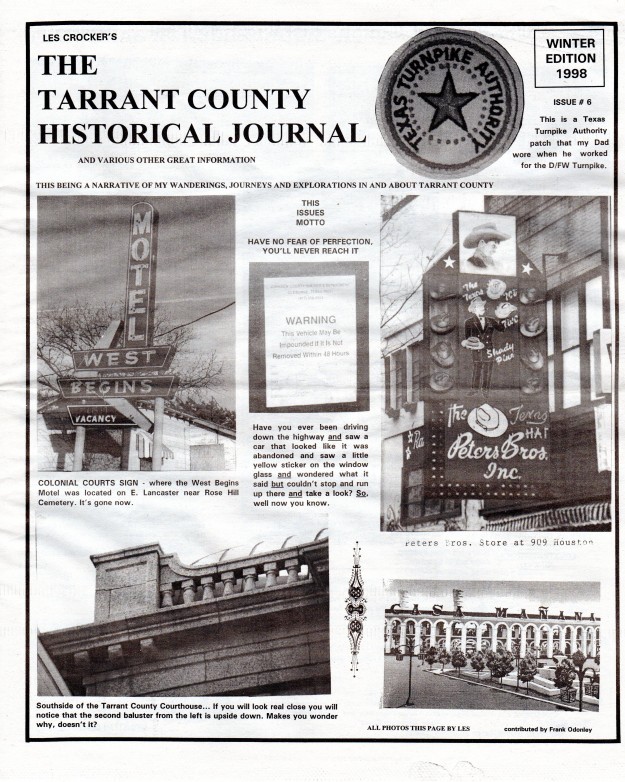The following is just a sample of the pictures and articles in the 20 pages of issue #6.
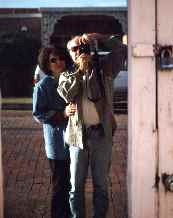 This is Neva and I, a self portrait. I am taking this picture of the window reflection.
This is Neva and I, a self portrait. I am taking this picture of the window reflection.
Hermann Park
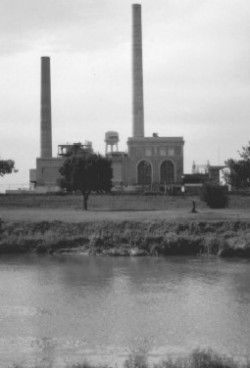 The area across the Trinity River to the north was once the site of Hermann Park, an important center for social events in the 1890’s, including an annual May Fest. The Texas Electric Plant was dedicated on this site in 1912. Heritage Park (high on the bluff near the bridge) was created during the Nation’s 1976 Bicentennial. It marks the site on which Fort Worth was founded in 1849. Tradition holds that Robert E. Lee looked over the valley from this bluff and remarked, “I hear the incoming march of thousands of feet.” Markers in the vicinity commemorate the site of the Fort as well as Fort Worth’s first school, Frenchman’s (or Beehive) Well, the Fort’s old stable (later converted into a hotel), and the Tarrant County Courthouse and Criminal Courts Bldg.
The area across the Trinity River to the north was once the site of Hermann Park, an important center for social events in the 1890’s, including an annual May Fest. The Texas Electric Plant was dedicated on this site in 1912. Heritage Park (high on the bluff near the bridge) was created during the Nation’s 1976 Bicentennial. It marks the site on which Fort Worth was founded in 1849. Tradition holds that Robert E. Lee looked over the valley from this bluff and remarked, “I hear the incoming march of thousands of feet.” Markers in the vicinity commemorate the site of the Fort as well as Fort Worth’s first school, Frenchman’s (or Beehive) Well, the Fort’s old stable (later converted into a hotel), and the Tarrant County Courthouse and Criminal Courts Bldg.
The reason firehouses have circular stairways is from the days of yore when the engines were pulled by horses. The horses were stabled on the ground floor and figured out how to walk up straight staircases.
Rock Church & Cemetery and old bridge off Hwy 2870
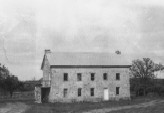 From Fort Worth, go out Hwy 377 through Granbury on through Tolar. Turn left just outside Tolar onto CO RD 2870. Go about 8 or 9 miles until you come to the new bridge. Look to your left and there through the trees you will see the old bridge.
From Fort Worth, go out Hwy 377 through Granbury on through Tolar. Turn left just outside Tolar onto CO RD 2870. Go about 8 or 9 miles until you come to the new bridge. Look to your left and there through the trees you will see the old bridge.
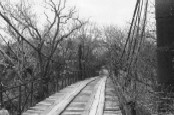 OLD iron bridge across the Paluxy River not accessible to public now on private land. I plan on going back someday and walking down the river which is real shallow and taking some pictures from the river bed. That way I will be on State land and not private land.
OLD iron bridge across the Paluxy River not accessible to public now on private land. I plan on going back someday and walking down the river which is real shallow and taking some pictures from the river bed. That way I will be on State land and not private land.
The Flood of 1949
On May 16, 1949 Fort Worth was pounded with more than five inches of rain. By May 17th the Trinity River rises over it’s banks and had flooded the West and North sides of Town. On West 7th Street, water rose to the second story of the Montgomery Wards Store. Farrington Field and University Dr. were under water. As the river receded, more than 1000 buildings were destroyed and over 13,000 people were homeless. Nine people died. The city of Fort Worth suffered more than eleven million dollars in losses.
By 1956 a Flood Way Plan was completed at a cost of $700,000 for construction. The river was straightened, the channels were widened and levees were built and strengthened. The Plan focused on three areas – the Lower West Fork, the Clear Fork, and North Main Street.
I don’t remember too much about the Big Flood of 1949 as I was only eight years old at the time. I recall taking my red wagon with a new shiny trash can in it and going down the street from Harris Hospital to a place we called “The Nurses’ Home”. It’s where a lot of the nurses who worked at Harris lived. At the “Home” they had a deep well where we would fill up the new trash can with water and bring it back home. I believe the City Water Works were under water, so, no water.
Texas is the only state that is allowed to fly its state flag at the same height as the U.S. flag.
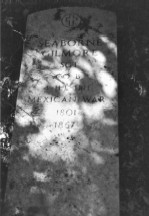 I found this tombstone at the old Mitchell Cemetery. It is one of the oldest cemeteries in Fort Worth. I was told that there weren’t any remaining markers, so this marker isn’t supposed to be here. This is just real weird.
I found this tombstone at the old Mitchell Cemetery. It is one of the oldest cemeteries in Fort Worth. I was told that there weren’t any remaining markers, so this marker isn’t supposed to be here. This is just real weird.
 Have you ever been driving down the highway and saw a car that looked like it was abandoned and saw a little yellow sticker on the window and wondered what it said but couldn’t stop and run up there and take a look? So, well now you know.
Have you ever been driving down the highway and saw a car that looked like it was abandoned and saw a little yellow sticker on the window and wondered what it said but couldn’t stop and run up there and take a look? So, well now you know.
Montgomery Wards on 7th Street
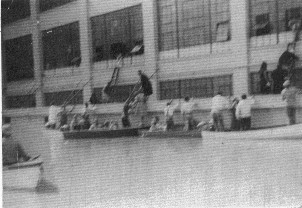 Some people told me you could still make out the water line at the second floor level, but I couldn’t.
Some people told me you could still make out the water line at the second floor level, but I couldn’t.
Dear Crocker,
On January 28, 1949 my wife and I married in Little Rock, Arkansas. We moved into a one room apartment at the Victory Apartments on Cherry Lane in White Settlement, just south of General Dynamics. They looked like Army Barracks.
I was working at General Dynamics on the second shift. The night before the flood the manholes (lids) were flapping up and down, there was so much water in the area.
The next morning I heard the levy had broke around the area of the Montgomery Wards store on 7th Street. The water got up to the second floor of the Wards store. People were calling the police, telling them they saw bodies floating around the store. It turned out to be the mannequins from Montgomery Wards. Some of the houses on Carroll Street were washed off their foundations. Since the flood they built a higher levy around the area into the Trinity Park.
– Harold Whatley
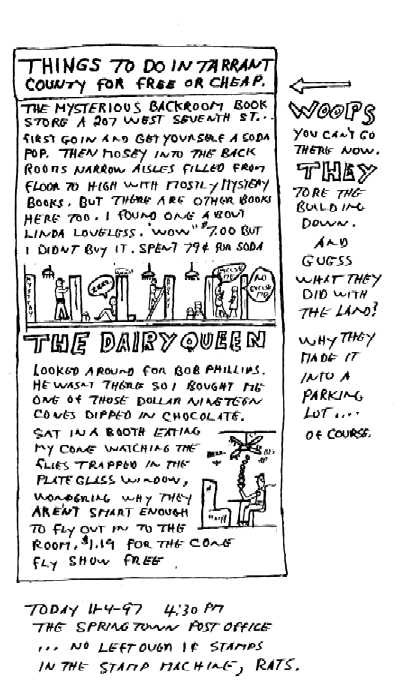
Street Etiquette in 1880
The gentleman gives the lady the inside of the walk.
Ladies should not walk rapidly. It is ungraceful. No gentleman should stand on the corner making remarks about the ladies passing by.
A gentleman should give his seat to a lady who may be standing in a public conveyance.
A gentleman should accommodate his pace to a lady and not be ahead of her.
Staring at people or spitting are evidence of poor breeding.
It is customary to give silent respectful attention to a passing funeral procession.
Swinging the arms, eating upon the street, sucking the parasol handles, and loud and boisterous talking and laughing are all signs of ill-breeding.
There are 254 Counties in Texas, but only one “Real” County.
J. A. Money was the first postmaster at Cash.
Just how large is Texas? Texas is 825 miles wide and 740 miles long. A total of 170,173 acres.
The State Capitol is at Austin. The building was dedicated May 16, 1888. It took three years to build and cost 3,000,000 acres of land.
Daisy Emery Allen was the County’s first female doctor. She practiced here from 1913 until 1958.
George Anderson was fired on Feb. 21, 1887 for slugging a woman in a saloon on Main Street. He said she was his wife.
Ruth Brown was the first white woman to settle in North East Tarrant County in 1849. She had with her, nine orphaned children.
Noel Burton owned the first liquor store in 1856. He called it “The First and Last Saloon”.
Indian Burial Site
In 1901 an Indian graveyard was discovered on the property of D. Conner Williams, at Lexington and Bluff Streets in Fort Worth. Three skeletons were found in the graves. Excavators also found arrow points, a package of vermilion, a stone pipe, a 16 inch long knife blade, a quantity of small white beads and a mirror set in an iron frame. This was reported in the “Fort Worth Star Telegram” Oct. 30, 1949.
How Did These Towns Get Their Names?
Afton (Dickens) – There is a beautiful little stream flowing through the community and when application was made for Post Office name, “Afton” from the old song, “Flow Gently, Sweet Afton” was sent in and approved.
Alba (Wood) – Following the Civil War, settlers here would not permit Negroes to locate in this Territory. When a township was organized, it was named Alba – Latin work for “White”.
Bebe (Gonzales) – W. G. Blair, grocer, was trying to think up a name and glancing upon his shelves, noticed a can of Bebe Baking Powder. He sent in the name “Bebe” and it was accepted.
Buffalo Gap (Taylor) – Located between two mountains, and years ago so many buffalo grazed in this section, the early settlers called the place “Buffalo Gap”.
Direct (Lamar) – Indians, it is said, were holding a pow wow across the Red River in what was then Indian Territory, now Oklahoma. They were out of whiskey. There was a saloon a short distance from this point and one of the Indians said, “I am going direct to Texas for some.” When petition was sent in for Post Office in 1884, the name Direct was sent in and accepted.
Grayback (Wilbarger) – In the early days, a cowboy camp here became infested with lice, commonly called “Graybacks”. When this office was established, the name “Grayback” was sent in and approved.
Trimble Technical High School now sits on the site where Fort Worth University once stood. On the east side of Tech High is College Avenue. When Fort Worth University was there, the area was called College Hill.
Things I’ve Learned About Traveling
When a waiter or waitress provides exceptional service, leave a generous tip.
Check hotel & motel bills carefully, especially local & long distance phone calls.
Take along two clothes pins or safety pins when you travel so you can pin the drapes shut in your motel room.
Carry hand-wipes in your glove compartment.
Put your address inside your luggage as well as on the outside.
Carry your own alarm clock when traveling.
Check to see if your charge card will cover your car rental insurance.
Before taking a long trip, fill your tank and empty your bladder.
Trust in God, but lock your car.
Never drive off until all passengers have buckled up.
Slow down in school zones.
Almost everything looks better after a good nights sleep.
Never buy just one roll of toilet paper or one roll of film.
Never eat anywhere that has a sign out front that says “Cook Wanted”.
Never eat chicken fried steak at any restaurant that doesn’t have a jukebox.
Never eat at any restaurant that advertises that they have the best chicken fried steak in town. They usually don’t.
When visiting a small town at lunch time, choose the cafe on the square.
Never open a restaurant.
And finally, Check for toilet paper before sitting down.

